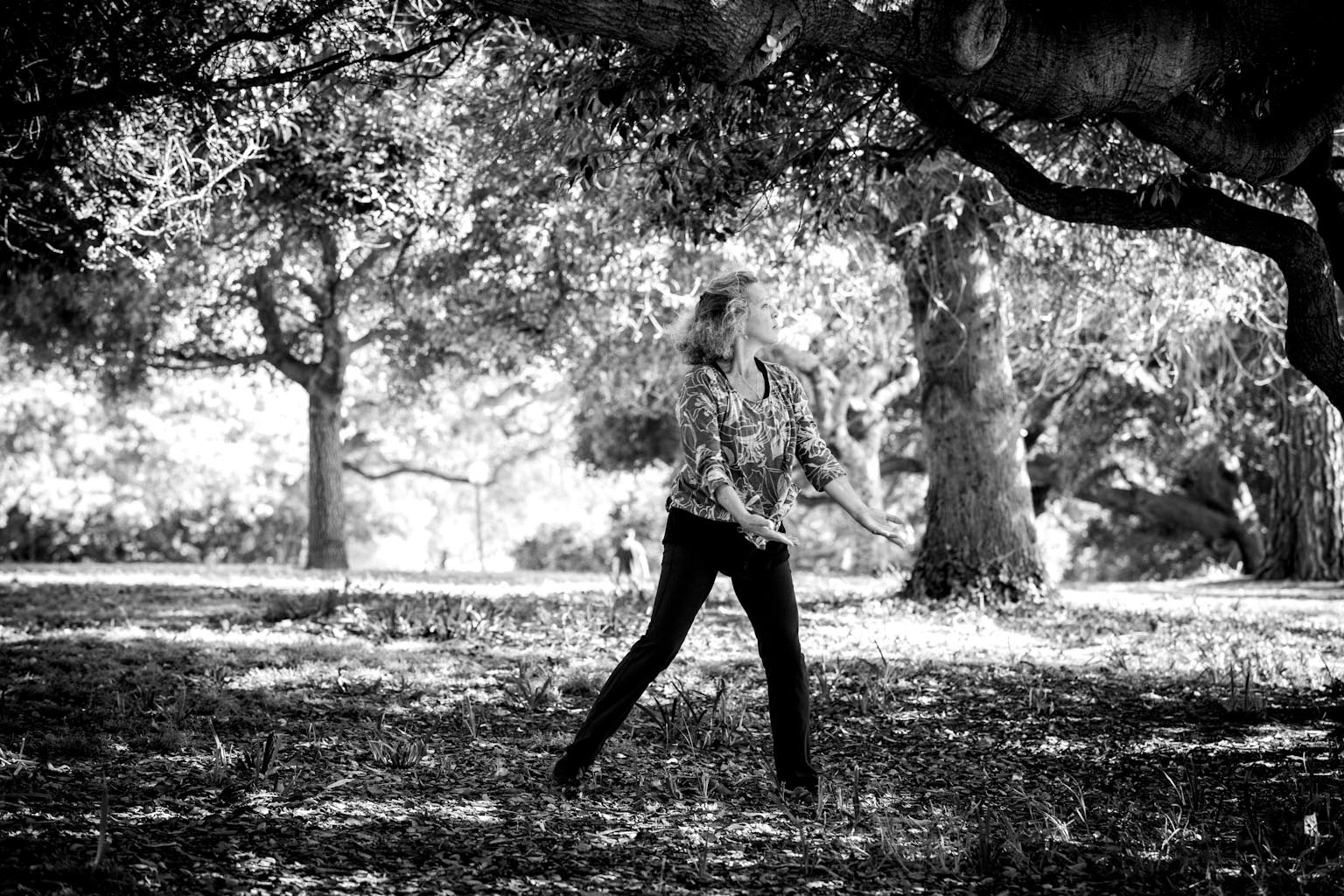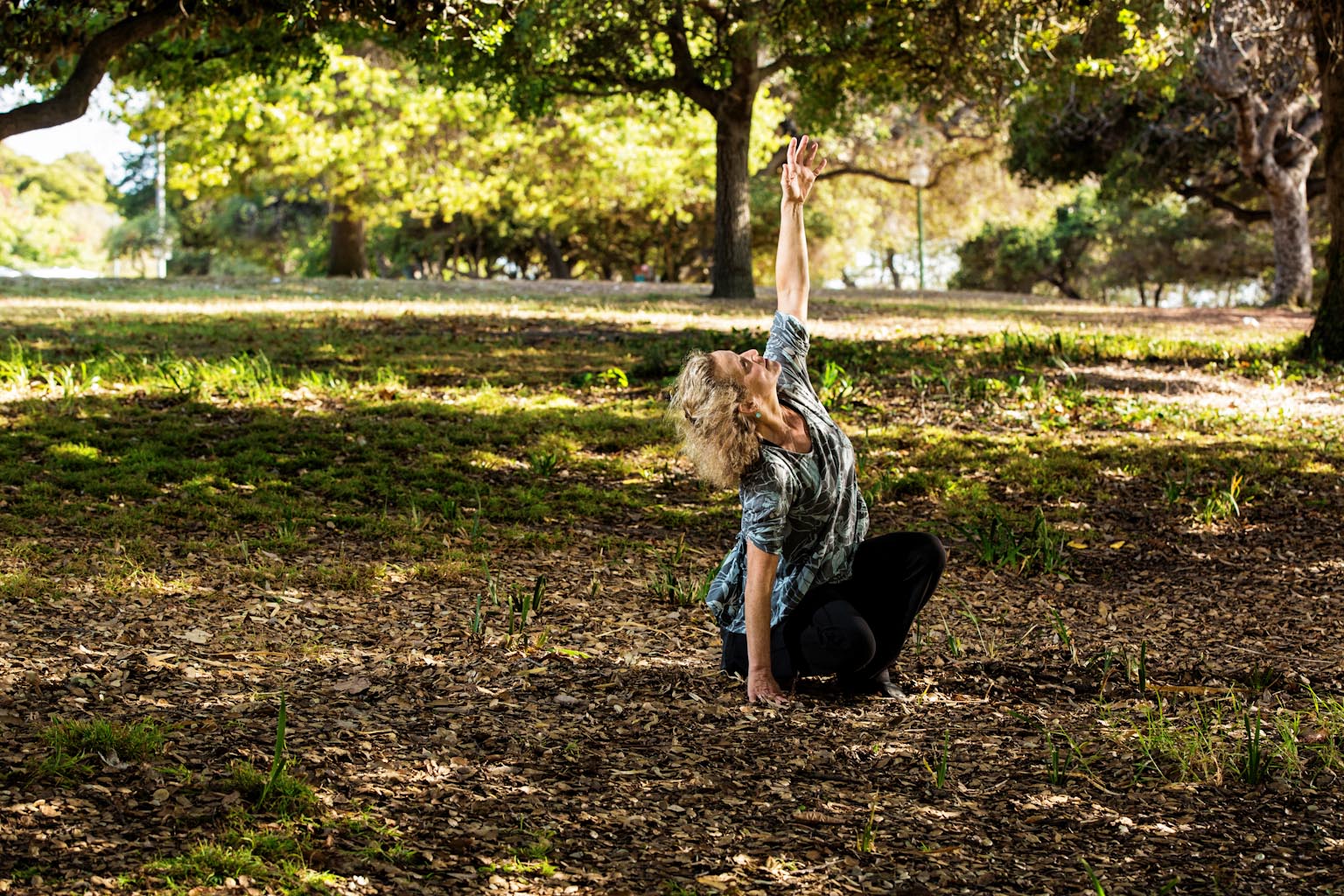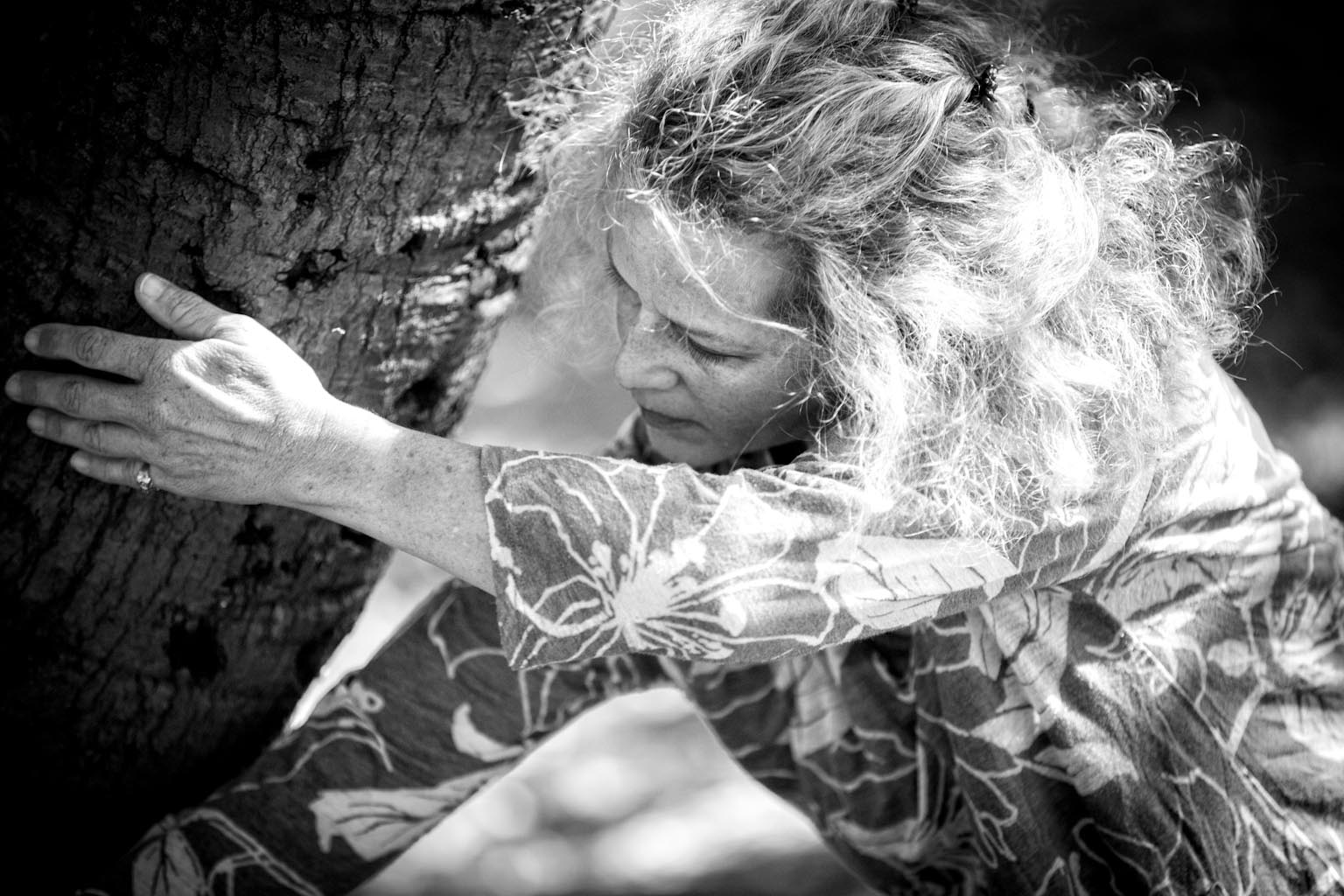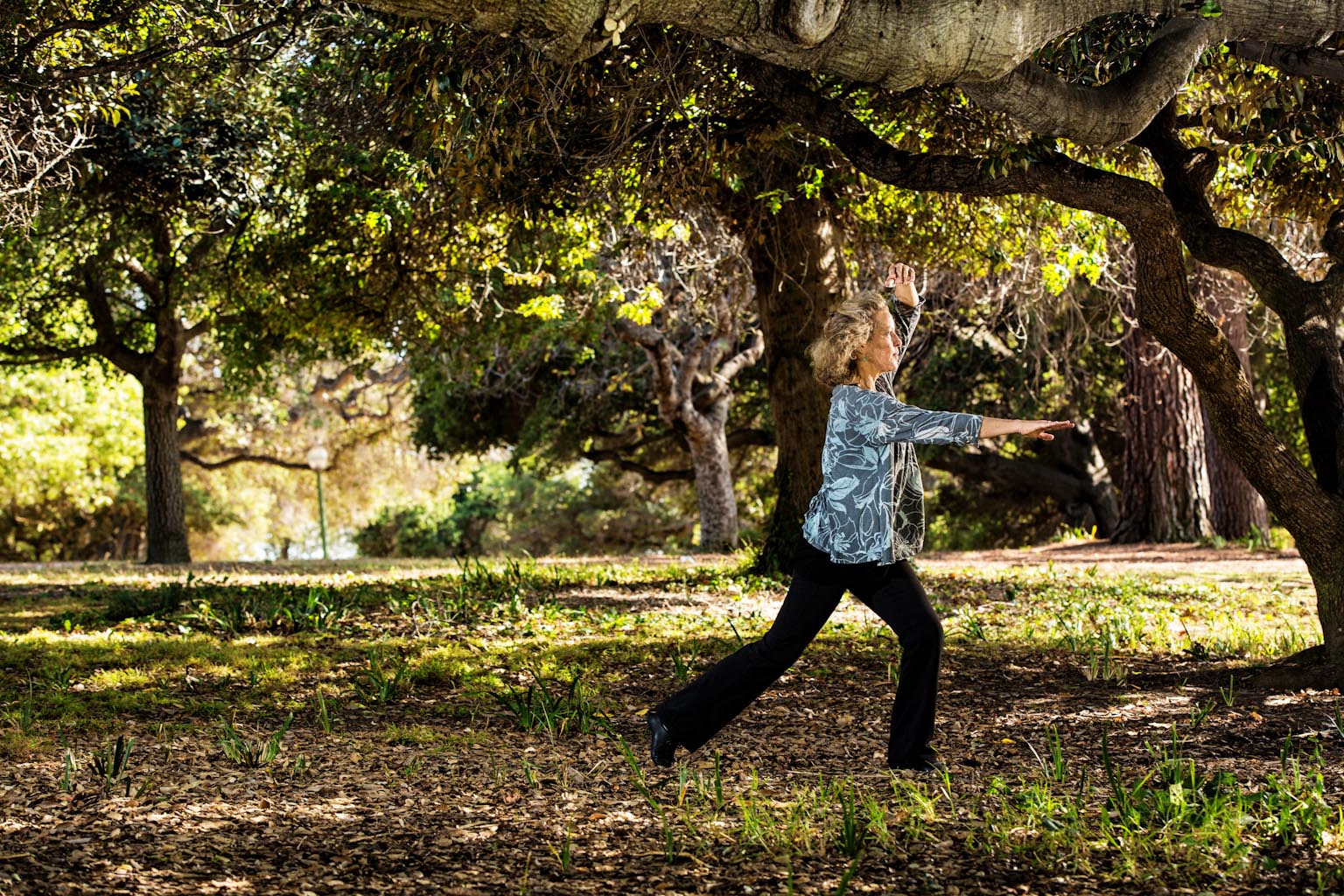Connection and Community: An Interview with Mira-Lisa Katz
BY EMMALY WIEDERHOLT; PHOTOGRAPHS BY GREGORY BARTNING
When Mira danced, it was as though she had invited me into a secret world. It was a bit like following Alice in Wonderland down a rabbit hole, but Mira’s dance pulled me down a gentle grassy slope instead. There was nothing hurried or excessive; she moved like a whisper that knows it doesn’t need to shout to be heard.
This interview is from the book “Beauty is Experience: Dancing 50 and Beyond.” Click here to learn more about the book, or click here to order your own limited edition copy!
~~
When did you start dancing and what have been some highlights along your journey?
I didn’t start dancing until I was 18. At a friend’s suggestion, I went and took a dance class. I was immediately in love with being able to communicate through movement and not being required to talk. It was a huge relief to me; speaking was not my thing.
Early on, I was introduced to Lucas Hoving, who had been a principal with the Limón Company. When I met him, he was in his late 70s, but he was teaching technique, choreography and improvisation. He started a performance group which I was part of for a while. It was magical to be working with someone who was such a master and yet so available.
The experience dancing for Lucas was in part what inspired me to get a degree in dance. I did things backward; I had a child before I went to college. I had never wanted to go to college until I realized you could actually study dance as a subject.
I went to Mills College to study dance. I didn’t end up getting the degree because I had a small child and thought I had to be practical. But I never stopped dancing, and have performed with many choreographers in the Bay Area over the years. Since 2010, I’ve been a member of SoCo Dance Theater, an intergenerational company with people ranging in age from the 20s to the 60s. Dance is where we all connect, and when we dance, it doesn’t matter how old we are. It’s a treasure to work with a group like that.
I have just finished my first year in an MFA program in dance at St. Mary’s College of California. It’s kind of crazy, as I also have an MA and PhD in language and literacy education. I wrote to the director of the program and asked if she was open to diversity in terms of age, and she said, “Absolutely.” There’s actually a couple of us in our mid-50s.
What does your current dance practice look like?
Right now, I take dance class on average three days a week. I also do Pilates, yoga, go to the gym and walk a lot. I find I need that variety. Although I would love to dance every day, I have to find other ways to be in my body now.
How has your motivation to dance evolved over time?
For me, dance is about expression, connection and community. It’s always been about those things, but I didn’t always know it.
I love creating art and working to accomplish a vision. I love the vulnerability of the dance environment. When we’re all taking class or rehearsing, everything is visible; there’s no hiding. I really appreciate that. I feel there’s an intrinsic honesty to dance that I really value.
The first couple of days I was in the MFA program, I had this experience of looking around the room and feeling like I had come home. Here were all these other people who had quirky habits like needing to stretch and sprawl about on the floor. It was a revelatory moment of realizing I was with kindred spirits.
What does the idea of success mean to you? Do you feel you’ve achieved some measure of it?
If success is about connection and having an artistic voice, then I feel like I am continuing to work toward success. If it’s about virtuosity in terms of what the body can do, then I’m totally over the hill.
However, in an MFA show this spring I deliberately chose to choreograph on two dancers over 50, and we received unexpectedly positive feedback. The piece was about loss, and I have thought to myself since then how it would have been a really different piece had I chosen to work with two dancers in their 20s instead. I love the embodied wisdom I see in older dancers. The notion of success all depends on what you want, what your purpose is, and who your audience is.
As far as my own sense of being a performer, it’s important to me to feel like I can be true to what I am actually capable of and feel good about it as opposed to trying to do what I did 20 years ago. Can I still dance with integrity and share what I think I have to bring? It’s a tough question. I know many older dancers who stop performing or even going to class because it makes them so sad they can’t do what they used to.
Do you have a sense of your legacy?
If my legacy exists, it’s one I’m still in the process of creating, and it has to do with writing about dance. I have spent my whole career as an academic, both teaching and writing about education. Over the last several years, I have shifted my focus to bringing my knowledge as an education researcher to this thing I know from the inside out; increasingly, I’m writing about dance, and it gives me great joy. It gives me permission to release myself from a more formal academic voice and write about my experience, the power of the arts, and the powerful role the arts can play in education.
Is there a circumstance that would cause you to stop dancing?
I don’t ever want to stop dancing, but I do feel increasingly self-conscious about being the oldest person in the room. Sometimes I think younger dancers wonder why people my age are even there. And yet I’m not even close to giving it up. I am moving more toward yoga, Pilates, authentic movement, choreography and writing. Those are new avenues I’m hoping I can go to in lieu of, or at least alongside, class.
What advice would you give to a younger generation of dance artists?
Pay attention. Don’t take things you can do for granted. And don’t underestimate your gifts. Find what is unique about the way you move, and value what you bring.
~~
Mira-Lisa Katz has been dancing in the Bay Area since 1977. She has performed with Lucas Hoving, Mary Reid, Jill Randall, Dana Lawton, Randee Paufve, Gay White, Ruth Botchan, Virginia Matthews, Nancy Lyons and Mercy Sidbury. She is currently pursuing an MFA in dance/creative practice at St. Mary’s College of California. In addition to dancing, Mira holds a PhD from UC Berkeley, and has been a professor of English at Sonoma State University, where she teaches teachers, since 2002. Her book, Moving Ideas: Multimodality and Embodied Learning in Communities and Schools can be found on Amazon.
This interview is from the book “Beauty is Experience: Dancing 50 and Beyond.” Click here to learn more about the book, or click here to order your own limited edition copy!





2 Responses to “Connection and Community: An Interview with Mira-Lisa Katz”
Thanks Evelyn! Indeed it is:)
Thanks for this inspiring interview. Dancing is good for both the brain and spirit.
Comments are closed.